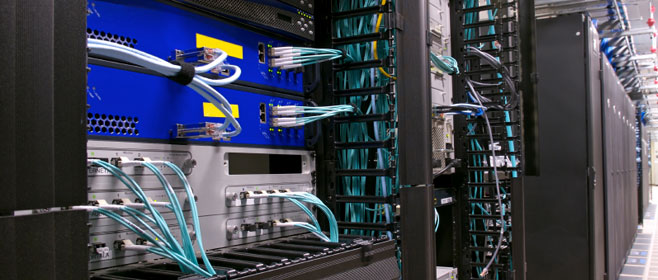
Modern Cabling System Design Trends – Part 1
 The most significant trend in IT (information technology) is the greater reliance of organizations on high-performance data communications (datacom) cabling. Industry leaders are reporting more than 50% of their market is for data and communications applications. Consequently, their research and development is concentrating on the development of new products and system enhancements.
The most significant trend in IT (information technology) is the greater reliance of organizations on high-performance data communications (datacom) cabling. Industry leaders are reporting more than 50% of their market is for data and communications applications. Consequently, their research and development is concentrating on the development of new products and system enhancements.
Objectives of System Design
IT is accelerating rapidly, and people are using it in ways and in areas that only became possible recently. Modern system design aims for maximizing communications capability and flexibility even in limited spaces that emphasize openness and visibility. As a result, the connections between workstations and datacom networks have grown in importance.
Various cable and wire management systems can be used for the management, organization, protection, and connection of cabling infrastructure. These systems allow communication, collaboration, and the flexibility to adapt to the evolving needs of businesses and their workspaces. Five systems are discussed below.
Open Space
Precisely positioned within an open space to allow power and datacom feeds into modular office furniture, poke-through devices can feature audio, video, and control connectors, along with active modules.
Overhead
Flexible and allowing accessibility in drop and open-ceiling applications, overhead systems utilize cable trays that are available in various styles, such as center spine, wire mesh, ladder, and solid bottom.
Perimeter
Easily accessible, expandable, and configurable, perimeter systems are capable of securely routing wiring and cabling along walls. They are primarily used for offices, classrooms, training centers, and conference rooms, offices, classrooms, and training centers.
Tabletop Modular Outlet (TMO)
TMO centers allow easy accessibility to datacom and power on task tables, desktops, study carrels, and lecterns. Their two main styles are recessed and pop-up, linking networked and portable computing.
Vertical Distribution
Visually attractive, vertical distribution units deliver datacom and power from ceilings directly to workstations. Absent the clutter of service poles, they conceal wiring and cabling in an aesthetically pleasing way.
Part 2 will cover High Performance Cabling and Aesthetics of Cabling.
Progressive Office Cabling
Founded in 1986, Progressive Office’s success has been a direct result of years of commitment to seeking solutions on behalf of their clients in the Washington, D.C. and New York City areas. Working together, their cabling teams get cabling installed and operating as fast as possible while minimizing disruption and downtime. Call their toll free number (800) 614-4560 today.


 As discussed in Part 1, the transition to IP-based security products along with the rapid increase in business applications has resulted in end-users expecting greater video, audio, and data integration. These items require delivery over a standardized structured
As discussed in Part 1, the transition to IP-based security products along with the rapid increase in business applications has resulted in end-users expecting greater video, audio, and data integration. These items require delivery over a standardized structured 




 It is known that
It is known that 


 Networking cabling is not a simple task. It entails expertise and attention to detail. What are valuable insights that
Networking cabling is not a simple task. It entails expertise and attention to detail. What are valuable insights that 
 Optical fiber
Optical fiber